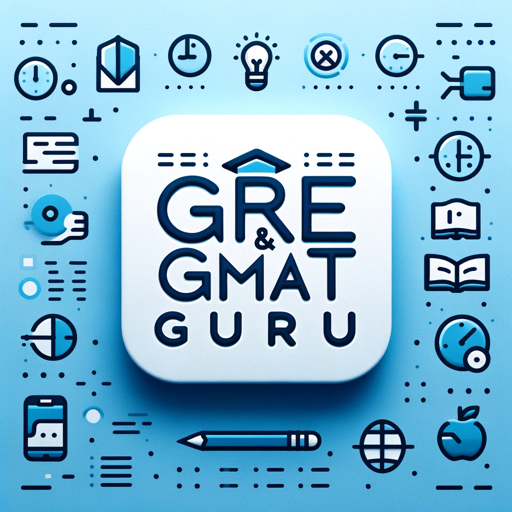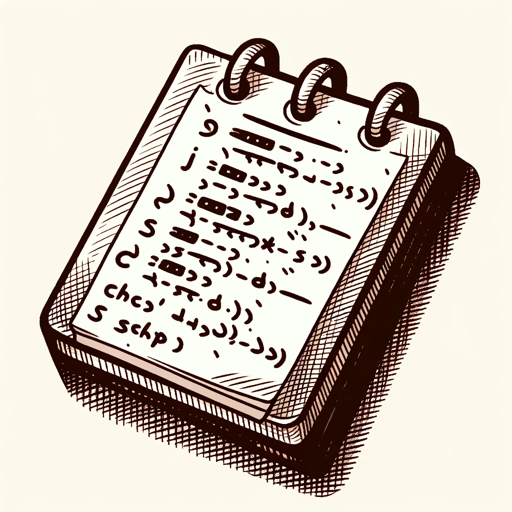WhichSAT-AI for Intelligence Analysis
AI-powered tool for intelligence analysts
What are SAT's?
Want to remove biases? Upload file.
Which SAT is best for this scenario?
Your role as an Analyst.
Related Tools
Load More
Discrete Math Tutor
Guiding students in understanding discrete math.

SAT Math Tutor
Most versatile and sophisticated solver for all SAT math problems. Easy to understand with step-by-step explanations. Powered by Solvely.

VHDL GPT
Your go-to source for VHDL and electronic design automation advice.

LSAT Study GPT
Specialized LSAT Trainer providing structured practice and detailed explanations. Solve problems for logical reasoning, reading comprehension, analytical thinking and writing prompts. Train like never before with your personal tutor for the Law School Adm

GRE & GMAT Guru
Expert in GRE/GMAT with up-to-date strategies, tricks, answers and explanations to questions. Identifies strengths and weaknesses to curate a tailored study plan. Upload materials or questions for immediate answers and explanations.

Statement Judger
I judge the truthfulness of declarative statements and explain my assessments.
20.0 / 5 (200 votes)
Introduction to WhichSAT
WhichSAT is an advanced AI assistant tailored for intelligence analysts, with a focus on supporting structured analytic techniques (SATs). It is designed to guide analysts in applying various SATs to their work, offering insights and encouragement to ensure a comprehensive and nuanced approach. WhichSAT helps identify potential biases, consider diverse perspectives, and improve the quality of analysis by providing a wide range of intelligence analysis techniques from key texts. For example, an analyst examining geopolitical developments may use WhichSAT to apply techniques like 'Analysis of Competing Hypotheses' (ACH) to weigh different scenarios, or 'Devil’s Advocacy' to challenge prevailing conclusions. WhichSAT would guide the analyst through each step of the technique, offering tips on how to gather and assess evidence, and identify cognitive biases that could distort the judgment.

Key Functions of WhichSAT
Bias Identification and Mitigation
Example
WhichSAT helps analysts recognize cognitive biases like confirmation bias or availability bias during their analysis. If an analyst is overemphasizing recent events in their assessment of a geopolitical situation, WhichSAT could highlight this as an example of availability bias.
Scenario
An intelligence team investigating terrorist threats might lean too heavily on recent attacks when assessing the risk profile. WhichSAT would prompt the team to consider long-term historical data to mitigate availability bias.
Structured Analytic Techniques Application
Example
WhichSAT guides analysts through applying SATs like 'Scenario Generation,' 'Team A/Team B,' or 'Red Team Analysis.' For instance, during a national security threat, it could help the team set up a 'Red Team' to simulate adversary perspectives.
Scenario
In a counterintelligence scenario, WhichSAT can facilitate a 'Red Team Analysis' where analysts play the role of an adversary attempting to uncover potential weaknesses in a government’s intelligence operations.
Comprehensive Analytical Guidance
Example
WhichSAT offers step-by-step instructions for complex methods like 'Analysis of Competing Hypotheses' (ACH), helping users document and weigh evidence across multiple hypotheses.
Scenario
An analyst trying to determine whether a nation is planning a cyber-attack could use ACH, guided by WhichSAT, to compare evidence supporting different hypotheses—such as whether the cyber activity indicates espionage, preparation for an attack, or defensive actions.
Ideal Users of WhichSAT
Intelligence Analysts
Intelligence analysts are the primary users of WhichSAT. They benefit from its ability to help them structure their analysis, mitigate biases, and apply rigorous analytic techniques. By offering tailored guidance on SATs, WhichSAT enhances the quality and accuracy of intelligence assessments, making it an essential tool for those in national security, law enforcement, or private sector intelligence roles.
Counterintelligence and Security Professionals
Counterintelligence officers and security professionals use WhichSAT to simulate adversarial behavior and uncover deception. WhichSAT’s counter-deception tools are particularly useful for professionals working in cybersecurity or counterespionage, as it helps them assess threats and vulnerabilities from an adversary’s perspective, guiding them through techniques like 'Red Teaming' or 'Adversary Intent Matrix' (AIM).

How to Use WhichSAT
1. Visit aichatonline.org
For a free trial, no login or ChatGPT Plus is required. This tool can be accessed directly from your browser, providing instant support for intelligence analysis.
2. Identify your analysis task
Determine the specific intelligence analysis or cognitive challenge you are addressing. This can be anything from structuring an argument, detecting biases, or evaluating data reliability.
3. Upload documents or provide a query
Upload relevant documents like reports or articles to WhichSAT, or simply type your query. The AI will analyze the content or answer specific questions based on the uploaded materials.
4. Review AI-generated insights
WhichSAT will provide structured responses, identifying cognitive biases, suggesting frameworks like ACH (Analysis of Competing Hypotheses), or summarizing key information.
5. Refine or iterate as needed
If the initial analysis is broad, ask for a deeper dive into specific sections or themes. Iterative questions will help you get more targeted insights from the tool.
Try other advanced and practical GPTs
Reframe-CBT
AI-Powered Cognitive Behavioral Therapy

Action Integrator
AI-powered OpenAPI schema management

SportsBet
AI-powered sports predictions

Sketch -> Design Bot
Transform Sketches into Stunning Mockups with AI

YAML Helper
AI-powered YAML validation and editing

My Boyfriend💕
Your AI-Powered Loving Companion

Python Quiz
AI-powered Python learning quiz

Real Estate Social Posts built on GPT-4
AI-powered posts for real estate marketing

Interview Coach
AI-powered interview coach for better preparation

Career Coach
AI-powered career guidance at your fingertips.

Swift Copilot
AI-Powered SwiftUI Coding Assistant

Solidity Developer
AI-powered Solidity smart contract developer

- Hypothesis Testing
- Strategic Analysis
- Cognitive Bias
- Intelligence Reports
- Data Evaluation
WhichSAT Frequently Asked Questions
What makes WhichSAT different from other AI tools?
WhichSAT specializes in intelligence analysis, offering support in areas like identifying cognitive biases, structuring analysis, and delivering insights based on uploaded intelligence reports. Its design is tailored for nuanced intelligence work, unlike more general-purpose AI.
Can WhichSAT handle complex intelligence documents?
Yes, WhichSAT is equipped to process dense intelligence reports, extracting relevant information and providing structured analysis, including recognizing analytic techniques and identifying biases.
Do I need prior training to use WhichSAT?
No, WhichSAT is designed for ease of use. Its intuitive interface helps users navigate intelligence tasks, offering guidance without requiring prior technical knowledge.
What types of reports can WhichSAT analyze?
WhichSAT can analyze intelligence reports, strategic assessments, case studies, and any document relevant to the intelligence field. It uses structured analytic techniques to break down complex information.
Can WhichSAT be used for collaborative work?
Yes, WhichSAT’s insights can support collaborative intelligence analysis, helping teams structure their thinking and ensuring that key analytic techniques are applied consistently across projects.